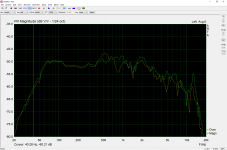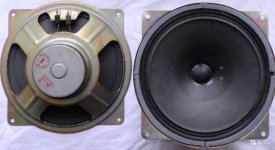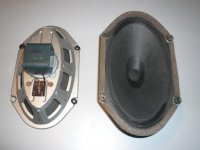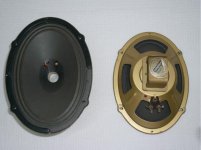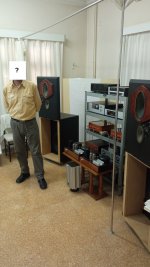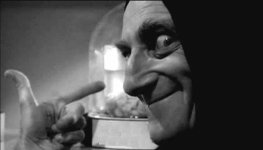Thank you both! The graphs fail to demonstrate the low frequency depth I perceive with my KT88 PP amps.
I would like to build something like this as a second system to just relax too on sunday night with some red wine and soak up the nice harmonics and engaging sound of dipole speakers. Might have to be smaller though hmmmm...
My current set up is an AMT tweeter in a waveguide and TD10M mid-woofer and I will be adding a tapped horn sub in a few weeks. I love it but it is so intensely clean and clear and dynamic that I feel like I need to balance it with something more "soft" and airy once in a while to enjoy all (most) recordings and open baffle with EL34 PP tube amps was something that did that a few years back. I had to retire when I moved into an apartment.
My current set up is an AMT tweeter in a waveguide and TD10M mid-woofer and I will be adding a tapped horn sub in a few weeks. I love it but it is so intensely clean and clear and dynamic that I feel like I need to balance it with something more "soft" and airy once in a while to enjoy all (most) recordings and open baffle with EL34 PP tube amps was something that did that a few years back. I had to retire when I moved into an apartment.
What I like mostly in these speakers is that they make frequency response and tonality unimportant. Not that I miss anything on this but their ability to create objects within an extended sound stage is striking. When I was doing the so called "voicing" I felt more like I was doing "positioning". And they manage this down to low bass. I'm not bragging they are best performers, just that they belong in this speakers' category. I'm addicted to this sound. In comparison, headphones sound broken to me.
Simple things! Measurements were done with the mic at 1 m distance, ear level -right between the two ovals. Nothing is normalized. First pic is frequency response on axis. Red is combined FR together with individual drivers. For the woofer the purple curve is captured as said above. The green one is near field with level adjusted to match the rest. Next pic is horizontal dispersion at 0, 30 and 60 deg. Impedance is following with a min 3,1 ohm at 1kHz.
The rest is step response, even more idiosyncratic... Combined and individual drivers compared to combined. I thought this was useful to check.
I have not expected such linearity - and decent directivity in the listening window as well - from the design based on, essentially, radiogram drivers! Congratulations!
This kind of drivers can be improved by surround treatment. Applying some damping compound - polyisobutylene, butyl rubber or vinyl acetate - provides cone termination, which is basically non-existent in one-piece uncoated paper cones, and dampens surround resonance.
An example of improvement brought by one side PIB coating is attached. Fig. 2 is for reference; it is the same model, but not the exact driver that was coated.
Attachments
Thanks! Keeping XO points low wrt the drivers' limits also helped a lot for directivity. As for the cone treatment, I fully agree. Not that I feel confident enough to do modifications like that but I've seen it in drivers of this kind/era some of them coming with surround treatment. In particular the Tesla and the JBL have this done by the factory resulting to great performance. The Isophon is very special for that! It has both surround and cone treatment with some material. Not all drivers from this brand had this. Mine have a "T" mark on the cone which from what I gather means treated for tropical weather. It sure works for audio! The only driver that is completely untreated is the small Grundig. I don't know if this was deliberately or not but it is the only driver of this size I found to cover the range I needed. Everything else typically wouldn't reach low enough. So, I don't feel like modifying this.
Attachments
Listening to (and looking at) this 100% diy audio system during a back pain treatment section by Kostas, believe me, is an experience!A speaker for cold winter nights, tube amps and single malt scotch ahhhh
George
Attachments
Only in my dreams...
BTW, it would be interesting to see what people think it fits in the question mark area!

BTW, it would be interesting to see what people think it fits in the question mark area!
George Dalaras?BTW, it would be interesting to see what people think it fits in the question mark area!
Close 

Well, I tried not to scare people but since you insist....BTW, it would be interesting to see what people think it fits in the question mark area!
Attachments
Known to be very passionate about his work but also a bit bragger. Hopefully, I'm more like the first but not even close to his legend. 🙂George Dalaras?
Fortunately, the ears are not shown!Well, I tried not to scare people but since you insist....
The amp -2x monos- is even more idiosyncratic. It has been posted here and there in discussions about relevant subjects, like this one https://www.diyaudio.com/community/...duction-work-yes-no-maybe.406808/post-7541991
No matter what the torture will be, I won't be able to answer all questions arising from this schematic...
- Home
- Loudspeakers
- Multi-Way
- Oxytocin
